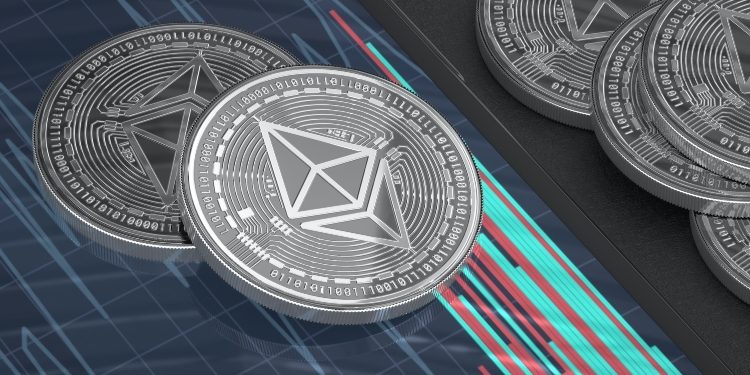The explosive growth of the Ethereum network has brought with it a pressing issue: scalability. As the Ethereum ecosystem continues to expand, its limitations in terms of transaction throughput, confirmation times, and rising gas fees have become increasingly evident. In this context offers an intriguing avenue for those interested in navigating the complexities of the crypto market, fostering a more accessible and efficient trading experience. To address these challenges, various scaling solutions have emerged, with Polygon (formerly known as MATIC) standing out as one of the most prominent. Discover the keys to financial success on quple.io right now.
Understanding Ethereum’s Scalability Challenges
Explaining Ethereum’s current scalability limitations
Ethereum, the second-largest blockchain network by market capitalization, operates on a Proof of Work (PoW) consensus mechanism. While PoW offers security, it is inherently limited in terms of transaction processing speed. Ethereum’s block time of around 15 seconds and its capacity for processing approximately 30 transactions per second (TPS) often result in congested networks and high transaction fees during periods of high demand.
Impact on transaction costs and confirmation times
As Ethereum’s network becomes congested, users experience skyrocketing gas fees, making it costly to perform even the most basic transactions or interactions with smart contracts. Additionally, confirmation times can be unpredictable, ranging from seconds to minutes, leading to a suboptimal user experience.
The importance of Layer 2 solutions
Layer 2 (L2) solutions aim to address Ethereum’s scalability limitations by moving a significant portion of transactions and smart contract interactions off the main chain. These solutions provide faster confirmation times and lower transaction costs by relying on the Ethereum main chain for security while processing most transactions on side chains or off-chain channels.
Enter Polygon: An Overview
Introduction to Polygon (formerly MATIC)
Polygon, formerly known as MATIC, is a Layer 2 scaling solution for Ethereum that aims to alleviate the network’s scalability issues. It achieves this by providing a framework for creating Ethereum-compatible sidechains and leveraging a Proof of Stake (PoS) consensus mechanism.
History and development of Polygon
Polygon was founded in 2017 by Jaynti Kanani, Sandeep Nailwal, and Anurag Arjun. Initially, it was conceived as an extension of the Ethereum network. However, its scope expanded to become a versatile Layer 2 solution supporting multiple PoS chains.
Key features and functionalities
- PoS (Proof of Stake) consensus mechanism: Unlike Ethereum’s energy-intensive PoW, Polygon relies on PoS, which is more energy-efficient and offers faster transaction processing times.
- Polygon PoS chains: Polygon’s architecture includes multiple PoS chains, each capable of handling a significant number of transactions independently.
- Security and interoperability: Polygon maintains a strong focus on security and interoperability with the Ethereum main chain, ensuring a seamless transition for users and developers.
Polygon’s Role in Scaling Ethereum
How Polygon enhances Ethereum’s scalability
Polygon effectively acts as a scaling layer on top of Ethereum. By offloading a substantial portion of transactions to its sidechains, it significantly increases the overall network capacity, reducing congestion on the main chain.
Layer 2 scaling solutions on Polygon
Polygon offers several Layer 2 solutions, including PoS chains, Plasma chains, and Rollup chains, each catering to different use cases and requirements. These solutions provide varying levels of scalability and security, allowing developers to choose the most suitable option for their projects.
Benefits for developers and users
- Lower transaction fees: With reduced congestion on the Ethereum main chain, Polygon users benefit from significantly lower gas fees, making interactions with decentralized applications (dApps) more cost-effective.
- Faster confirmation times: Transactions on Polygon are processed quickly, offering users a seamless experience with near-instant confirmations.
- Enhanced user experience: The combination of lower fees and faster transactions makes Polygon an attractive choice for users and dApp developers looking to improve their offerings.
The MATIC Token: Utility and Governance
MATIC token’s role within the Polygon ecosystem
The MATIC token serves as the native cryptocurrency of the Polygon network, facilitating transactions, staking, and participating in the network’s governance.
Staking and earning rewards
Users can stake MATIC tokens to secure the network and earn rewards, contributing to its security and decentralization.
MATIC token’s governance and decision-making
MATIC token holders have a say in the network’s development and decisions through on-chain governance, ensuring a decentralized and community-driven approach.
Challenges and Future Outlook
Potential challenges and competition
Polygon faces competition from other Layer 2 solutions and blockchain networks, making continuous innovation and development crucial for its success.
Future developments and upgrades
The Polygon team is actively working on improving the network’s security, interoperability, and scalability, with plans to integrate with Ethereum 2.0.
Polygon’s role in Ethereum 2.0
Polygon aims to complement Ethereum’s transition to Ethereum 2.0 by providing scalable solutions and bridging the gap during the transition.
Conclusion
Polygon, with its innovative Layer 2 solutions and commitment to enhancing Ethereum’s scalability, plays a vital role in enabling the mass adoption of blockchain technology. By addressing Ethereum’s current limitations, Polygon not only benefits existing users but also opens up new possibilities for developers and enterprises, ultimately propelling the blockchain ecosystem forward into a more efficient and accessible future.
David Prior
David Prior is the editor of Today News, responsible for the overall editorial strategy. He is an NCTJ-qualified journalist with over 20 years’ experience, and is also editor of the award-winning hyperlocal news title Altrincham Today. His LinkedIn profile is here.













































































